Books in Brief
A world-changing entrepreneur, capitalist families, inspiring CFOs, and wise advisors.
(originally published by Booz & Company)Joe Wilson and the Creation of Xerox
By Charles D. Ellis
Wiley, 2006
414 pages, $27.95
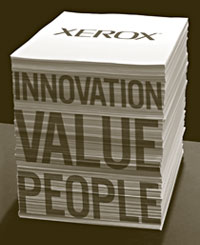 |
|
Photograph by Opto |
When the shy, intellectual Joe Wilson graduated from Harvard Business School to join the Haloid Company — his family’s firm — in the depths of the Depression, it was a small, me-too seller of photographic paper products based in Rochester, N.Y., in the shadow of its much larger rival, Kodak. Wilson realized that the firm needed new products, but it would take a chance reading of a research abstract in 1945 by one of his colleagues to direct him to the work of Chester Carlson, the inventor of xerography, and to the Battelle Memorial Institute, which had undertaken the development of Carlson’s patents. It would take another 15 years or so before Haloid, now renamed Xerox, would launch the 914, the world’s first plain-paper copier.
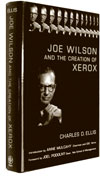 During xerography’s long gestation, Joe Wilson played the role of visionary, strategist, and assembler of organizations. What strikes one most is his unshakable faith that xerography’s potential would be realized. As late as 1958, a market study by the respected technology consulting firm Arthur D. Little suggested that the 914 was far too costly to compete with products already on the market, and as a result IBM turned down the opportunity to license and market it. By 1961, however, the machine, which cost $2,500 to make, had changed America’s office habits; each installation generated a rental stream that averaged $4,000 a year.
During xerography’s long gestation, Joe Wilson played the role of visionary, strategist, and assembler of organizations. What strikes one most is his unshakable faith that xerography’s potential would be realized. As late as 1958, a market study by the respected technology consulting firm Arthur D. Little suggested that the 914 was far too costly to compete with products already on the market, and as a result IBM turned down the opportunity to license and market it. By 1961, however, the machine, which cost $2,500 to make, had changed America’s office habits; each installation generated a rental stream that averaged $4,000 a year.
Throughout his career, Joe Wilson displayed a constant interest in people. His preoccupation with humanitarian causes stemmed from a deep concern for the role of the corporation in society. By the time he died in 1971, Xerox was one of the greatest business success stories of all time. It was perhaps fortunate that he did not live to see the subsequent squandering of corporate resources by the managers who succeeded him and the shameful events of the late 1990s, as Xerox came close to bankruptcy in the wake of a financial scandal. When, in 2001, Ann Mulcahy accepted the challenge of turning Xerox around, she reached for the values that Joe Wilson had first instilled in the company.
Family Capitalism: Wendels, Haniels, Falcks, and the Continental European Model
By Harold James
Belknap Harvard, 2006
446 pages, $39.95
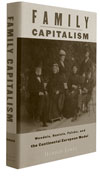 Family businesses and their intertwinements with European states and markets are examined in Family Capitalism: Wendels, Haniels, Falcks, and the Continental European Model, by Harold James, professor of history and international affairs at Princeton University. The author compares and contrasts the development of three family businesses, one French (Wendel), one German (Haniel), and one Italian (Falck), from their origins in the late 18th century to the present day. For the first 150 years of this era, coal, iron, and steel formed the backbone of national economies as well as military power, and these families were at the nexus of business and politics. The Wendel family, in particular, with its major operations situated in Lorraine, found their business tossed back and forth between France and Germany six times between 1870 and 1945!
Family businesses and their intertwinements with European states and markets are examined in Family Capitalism: Wendels, Haniels, Falcks, and the Continental European Model, by Harold James, professor of history and international affairs at Princeton University. The author compares and contrasts the development of three family businesses, one French (Wendel), one German (Haniel), and one Italian (Falck), from their origins in the late 18th century to the present day. For the first 150 years of this era, coal, iron, and steel formed the backbone of national economies as well as military power, and these families were at the nexus of business and politics. The Wendel family, in particular, with its major operations situated in Lorraine, found their business tossed back and forth between France and Germany six times between 1870 and 1945!
In his introduction, James underlines the ongoing importance of family businesses to capitalism. The rest of the book is organized into five phases, or “ages,” in the development of these enterprises: those of the individual, the corporation, “organizationalism,” the postwar miracle, and globalization. Within each of these ages, James traces the history of each family enterprise, weaving together the economic and political conditions that they encountered. This makes for a complex narrative construction, and, as the cast of characters grows in each family, it can be difficult to keep track of who is who. Fortunately, this does not interfere with the author’s central themes.
James finds no evidence for the so-called modernization model. As proposed by Alfred Chandler in The Visible Hand: The Managerial Revolution in American Business (1977), this model views the family firm as an early childlike stage in an organization’s life that will eventually give rise to a multidivisional public company managed by a technocratic elite. Instead, we should think of the family firm as capitalism’s “default condition,” the institution to which it reverts when states stumble and markets fail. As the author shows in the histories of all three families, the crises that accompany such events also create family solidarity, quelling more fractious elements at a time when organizational cohesion and focus are most important. Certainly there are constraints on the kinds of businesses in which families may be most comfortable — generally growth industries without very high capital requirements — but there are also businesses in which the commitment and tradition that a family brings to a firm resonate with customers who want a relationship, not just a transaction.
Reinventing the CFO: How Financial Managers Can Transform Their Roles and Add Greater Value
By Jeremy Hope
Harvard Business School Press, 2006
272 pages, $29.95
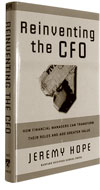 In his last book, Beyond Budgeting: How Managers Can Break Free from the Annual Performance Trap (Harvard Business School Press, 2003; reviewed in s+b, Winter 2003), management researcher Jeremy Hope made a persuasive case that in most firms, the traditional annual budgeting process is a powerful barrier to fundamental change. He recommended that the two prime functions of budgeting, financial forecasting and performance management, be separated, and that fixed performance contracts based on internal targets be replaced with stretch goals based on relative improvement measured by external benchmarks.
In his last book, Beyond Budgeting: How Managers Can Break Free from the Annual Performance Trap (Harvard Business School Press, 2003; reviewed in s+b, Winter 2003), management researcher Jeremy Hope made a persuasive case that in most firms, the traditional annual budgeting process is a powerful barrier to fundamental change. He recommended that the two prime functions of budgeting, financial forecasting and performance management, be separated, and that fixed performance contracts based on internal targets be replaced with stretch goals based on relative improvement measured by external benchmarks.
In Reinventing the CFO: How Financial Managers Can Transform Their Roles and Add Greater Value, Hope explores the implications of this advice for the chief financial officer. He begins by outlining the pressures that limit today’s CFOs: Corporate success is no longer driven by physical assets and financial capital but by intellectual assets and human capital; the new regulatory environment is adding pressure even as shareholders become more demanding; and internally, CFOs are being overwhelmed by too much detail and complexity, so they cannot forecast accurately or deduce exactly how to cut costs. Systems designed to track transactions do not lend themselves to supporting frontline decisions. The author contrasts two visions of how to improve the situation, dubbing them “A” and “B,” perhaps in tribute to Douglas McGregor’s Theory X and Theory Y, which they resemble closely. The first, Vision A, is based on assumptions of individual self-interest and the efficacy of “carrot-and-stick” management; it is a centralized model with stability and control imposed from the top. Vision B, on the other hand, is rooted in greater trust and cooperation; it encourages frontline operators to continually improve processes in order to increase value for customers and shareholders alike. Vision B’s emphasis is on adaptability and growth rather than stability and control.
In the seven chapters that follow, Hope explores a variety of roles for the CFO, including “freedom fighter,” “architect of adaptive management,” “master of measurement,” and “champion of change.” As he does so, the radical nature of Vision B becomes clear; its key ingredients are trust, integrity, responsibility, and commitment. The kinship of Vision B with “lean” processes practiced by companies like Southwest Airlines and Toyota is obvious, and indeed the case for companies becoming more like these exemplary organizations is difficult to refute. The challenge is, How? These models, which entail a radical shift in organizational power and seem to be of the all-or-nothing variety, cannot be adopted piecemeal. Perhaps stories of such transformations are forthcoming in a future book.
Taking Advice: How Leaders Get Good Counsel and Use It Wisely
By Dan Ciampa
Harvard Business School Press,
2006
220 pages, $26.95
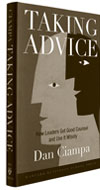 Consultant Dan Ciampa has written a book on how best to use advice. In Taking Advice: How Leaders Get Good Counsel and Use It Wisely, Ciampa develops a new framework by identifying four kinds of advice and four kinds of advisors. He suggests that the key categories of advice are strategic, operational, political, and personal, and that the important types of advisors are the experts, who offer deep specialized knowledge; the experienced, who have held jobs like the leader’s; the partners, who sign on for longer durations as advisors; and the sounding boards, who offer a “safe harbor” where the leaders can express their own minds, confident that their views will go no further. In his opinion, every leader needs a balanced advice network.
Consultant Dan Ciampa has written a book on how best to use advice. In Taking Advice: How Leaders Get Good Counsel and Use It Wisely, Ciampa develops a new framework by identifying four kinds of advice and four kinds of advisors. He suggests that the key categories of advice are strategic, operational, political, and personal, and that the important types of advisors are the experts, who offer deep specialized knowledge; the experienced, who have held jobs like the leader’s; the partners, who sign on for longer durations as advisors; and the sounding boards, who offer a “safe harbor” where the leaders can express their own minds, confident that their views will go no further. In his opinion, every leader needs a balanced advice network.
For the reader, the principal benefit of this book is that it helps one think through the kind of advice network one needs and how to set it up. There are two hurdles in setting up a balanced advice network: the selection of the right advisors and the formation of strong working relationships. The criteria for selection are content (does the advisor possess the kind of knowledge I am looking for?), competence (does the advisor have direct experience?), and chemistry (are the advisor and I on the same wavelength?). A strong working relationship requires the leader to define the desired end state, while the advisor’s role is to develop the means to achieve it. The tests are practicality (does it match both the complexity of the situation and the capability of those taking advice?), whether value is being added, dependability, and commitment. Ciampa supplies abundant practical examples of the principles in action.
Taking Advice, like so many management books, is no more than applied common sense. The strengths of this volume are its clear frameworks and the author’s obvious knowledge of his subject. At times, however, the prose feels padded, and one wonders if this topic might have been better dealt with in an article or two rather than in a full-length book. ![]()
Reprint No. 07111
David K. Hurst (david@davidkhurst.com) is a contributing editor of strategy+business. His writing has also appeared in the Harvard Business Review, the Financial Times, and other leading business publications. He is the author of Learning from the Links: Mastering Management Using Lessons from Golf (Free Press, 2002).
